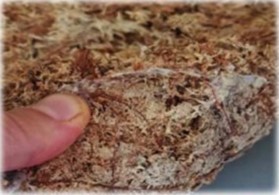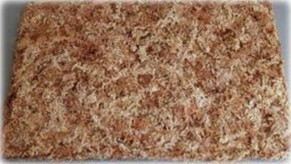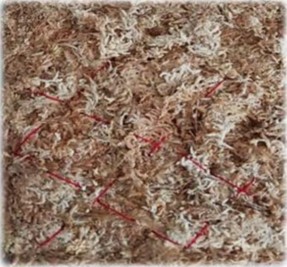Summary
- Profile Type
- Technology offer
- POD Reference
- TOIT20230707009
- Term of Validity
- 10 July 2023 - 9 July 2025
- Company's Country
- Italy
- Type of partnership
- Investment agreement
- Research and development cooperation agreement
- Commercial agreement with technical assistance
- Targeted Countries
- All countries
Contact the EEN partner nearest to you for more information.
Find my local partner
General information
- Short Summary
-
An Italian SME – located in Northern Italy and operating from 2020 – specializes in forms of art with greenery. It is looking for companies to develop an industrial prototype of its patented growth carpet for plant cultivation. It is a growth mat based on sphagnum moss for growing plants, in particular plants with horizontal development such as bryophytes.
It is seeking partners to create an industrial prototype for its carpet for plant cultivation, which will then go into mass production. - Full Description
-
Since 2020, a Lombardy-based Italian SME has been working on projects including bio-architecture and eco-design.
The company has patented an innovative growth mat for plant cultivation, especially non-vascular plants like bryophytes.
The purpose of this invention is to create a growth mat made of long sphagnum fibers that is ideal for moss culture, a resilient and self-supporting growth carpet that may be grown directly without the need for pots or other containers.
The provision of a growth mat that allows cultivated plants' roots to spread out without running into physical barriers is another goal of the invention: this will facilitate the root system's distribution.
Another specific aim of the present invention is to provide a growing mat that is resilient to mechanical stresses and vibrations, flexible, adaptable, and highly controllable, as well as transportable and capable of being rolled up on itself.
Furthermore, this mat is made entirely of natural fibers and recyclable materials, is eco-sustainable, and is completely ecological.
Regarding the characteristics of such a carpet, the long fibers of sphagnum moss are combined with other fibers in an extended form, particularly textile fibers, to create a continuous layer that is amalgamated and durable. To create a truly ecological layer, natural textile fibers like hemp, cotton, and wool are chosen for use in producing these layers.
To prevent sphagnum fibers from dispersing, textile fibers are mostly used to make meshes that trap the fibers, making for a product that is not only thin and compact but also resilient and flexible.
A support layer is placed in between the two developing layers to ensure that the growing layer is very resilient, elastic, resistant to mechanical shocks, and flexible enough to roll up.
A quilting procedure is used to combine the first crop layer, the support lattice layer, and the second crop layer in a compact structure, which is advantageous compared to any other bonding approach. The support layer's reticular composition boosts its effectiveness, and the quilt stitching enables the two cultivation layers to be fastened to it.
Preferably, the quilting can be done with natural or synthetic materials (e.g. nylon thread).
Other layer configurations are feasible as long as there is at least one layer of flexible and reticular support and one layer of cultivation that are quilted together.
It is actually preferable to offer a growth mat with a reticular and flexible support layer always organized as a foundation layer in the case of strictly horizontal use. In general, a growing mat according to the present invention can be made in various shapes and configurations, without particular size limitations.
Additionally, depending on the various application goals, different amounts of sphagnum fibers and textile fibers can be utilized in the cultivation layer composition.
Because of its adaptability, moss has also been studied in the construction industry, both functionally and aesthetically. For instance, it has long been known that moss acts as an insulator because, by fast and spontaneously multiplying, it can completely cover structures, protecting them from cold. It has the capacity to hold onto a variety of things, including carbon dioxide, particulate matter, heavy metals, etc., making it a superb natural air conditioner. Furthermore moss allows for nearly twice as much oxygenation as a towering tree, which is another important consideration.
The SME is looking for new partners across the globe able to realize an industrial prototype of its growth mat for plant cultivation.
Potential partners could later be involved in the mass production of that product. - Advantages and Innovations
-
Sphagnum moss has been discovered to be an appropriate component among the numerous elements for the growth and cultivation of moss because of its acidic pH, anti-bacterial and anti-fungal qualities, which prevent it from deteriorating, high absorbency, and good tensile strength of its fibers.
Additionally, a support layer makes it possible to have two cultivation layers in a single body, and at the same time, the gravity is split into two layers for vertical applications and in the presence of a lot of water (like rain). This enables each layer to hold its weight and withstand tearing more effectively.
It should be emphasized that the quilting technique contributes to the product's exceptional elasticity: the carpet may be rolled up on itself, wet or dry, without losing its compactness or becoming less durable.
Vegetable fibers are nearly exclusively found in textiles, which has the benefits of not requiring glue, preventing material dispersion, and having a high intrinsic resistance to mechanical stress and vibrations. Due to the flexible yet sturdy support layer, it can adapt to any form of temperature shock and atmospheric condition. It is particularly appropriate for applications requiring resistance to foot traffic and washout.
Another benefit enables the carpet to be used even when the application calls for a lesser surface area than what the carpet's original designers had anticipated. In order to achieve this, additional quilting operations may be provided to add lines to the carpet that serve as cutting guidelines.
The sphagnum moss and other current fibers' qualities are not altered in any way by the production of the carpet, which also preserves its hydrolytic and ionizing properties. Due to the fact that it is composed of natural fibers and/or recycled materials, its eco-sustainability is also assured.
Its use is extremely flexible and can be used both in internal (eco-design) and outdoor contexts (urban, forest). - Stage of Development
- Under development
- Sustainable Development Goals
- Goal 9: Industry, Innovation and Infrastructure
- IPR status
- IPR granted
Partner Sought
- Expected Role of a Partner
-
The company is looking for partners in order to realize industrial prototype of its patented growth carpet for plant cultivation.
Potential partner could be subsequently engaged in mass production.
The company seeks partnership under the framework of a manufacturing agreement or technical cooperation agreement.
Further details shall be discussed directly with potential partners. - Type and Size of Partner
- SME 11-49
- R&D Institution
- Big company
- Other
- SME 50 - 249
- SME <=10
- University
- Type of partnership
- Investment agreement
- Research and development cooperation agreement
- Commercial agreement with technical assistance
Dissemination
- Technology keywords
- 10002013 - Clean Production / Green Technologies
- Market keywords
- 09005 - Agriculture, Forestry, Fishing, Animal Husbandry & Related Products
- 05009004 - Plant health
- 09008002 - Water, sewerage, chemical and solid waste treatment plants
- Sector Groups Involved
- Creative Industries
- Agri-Food
- Targeted countries
- All countries





